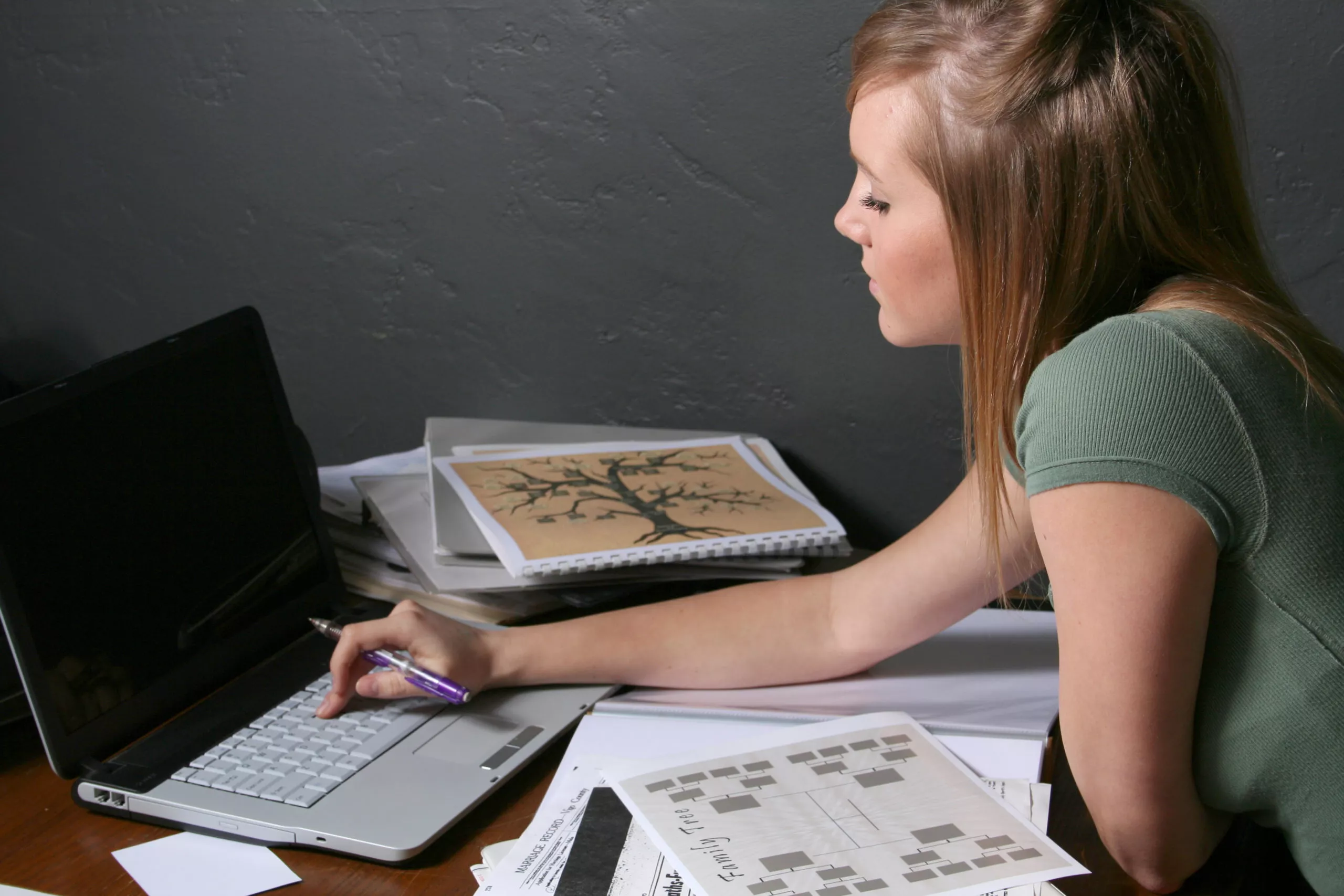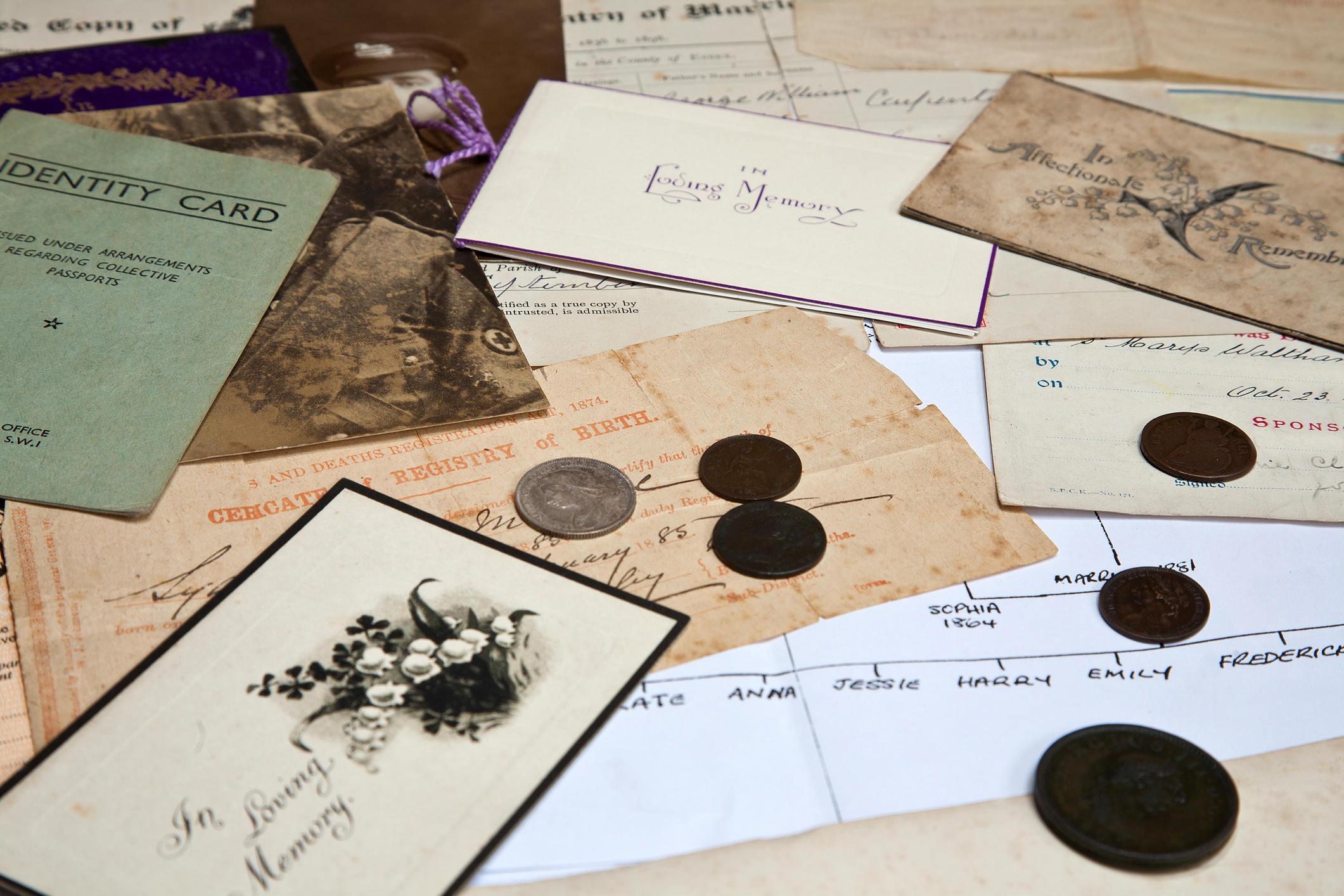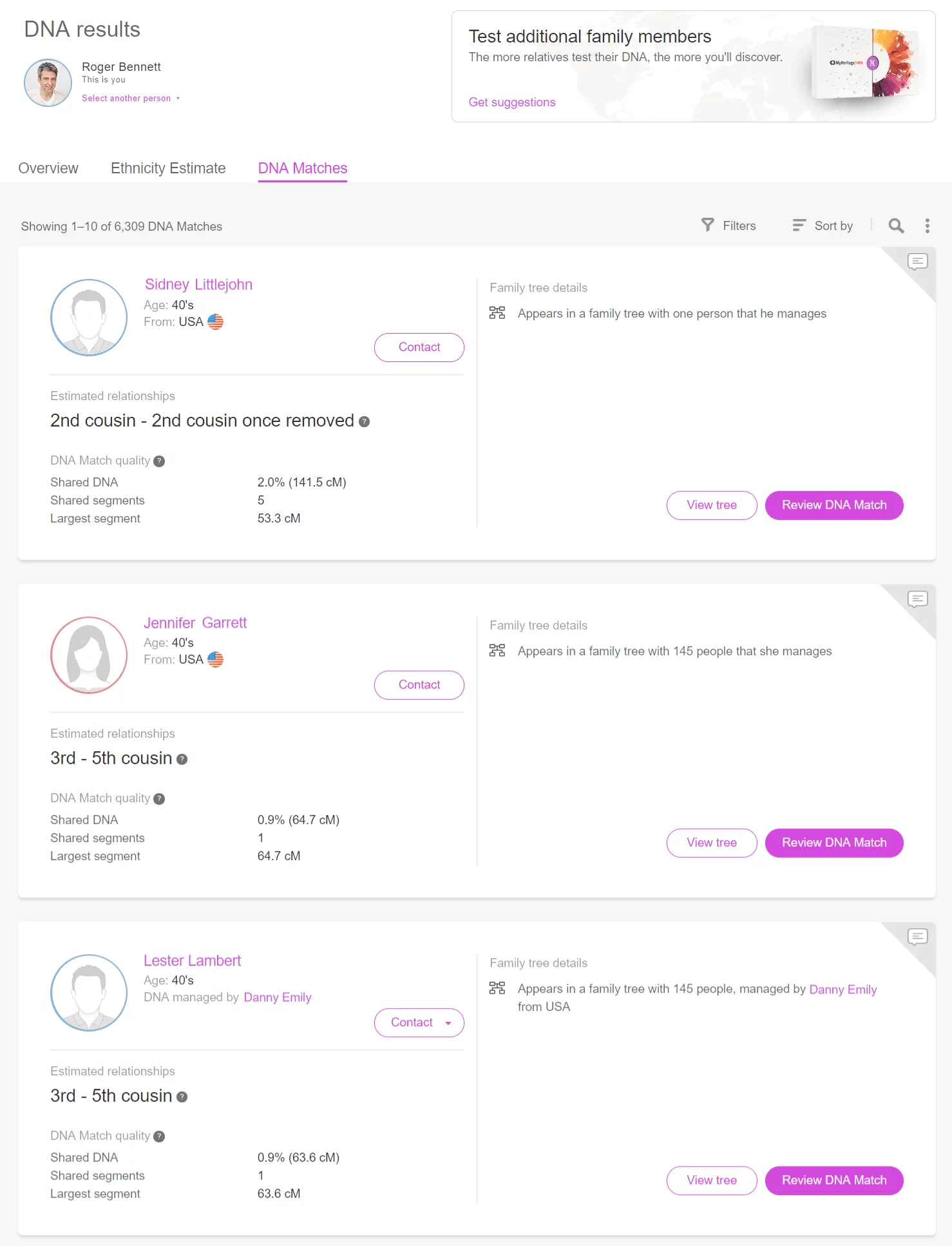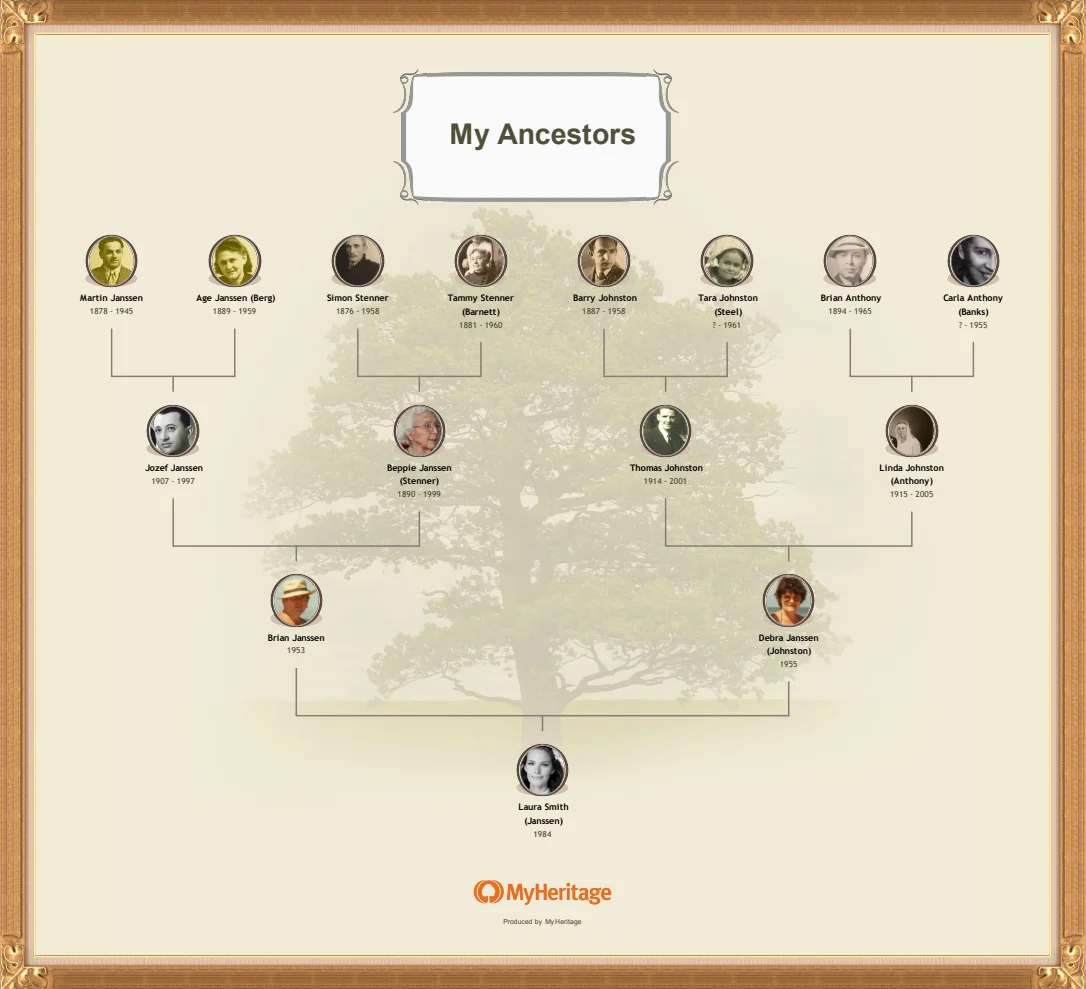
New to genealogy research? Welcome to the wonderful world of family history! In this article we’re going back to the basics to help those of you with no experience or knowledge in genealogy get off to a great start.
What is genealogy research?
Genealogy is the study of one’s family history — that is, the history of one’s lineage or family tree. Researching your genealogy means building a family tree and gathering information about your family members from the recent and distant past.
People research their genealogy to learn more about who they are and where they come from. Whether you already know many details about your family’s origins or you’re starting from scratch, working on your genealogy can help you gain insights about your roots and what makes you you.
Step 1: Gather what you know
The very first step in genealogy research is to gather what you already know — and you probably know more than you think.
You can start by building a basic family tree and entering all the information you have, starting with yourself and branching outwards and upwards. Click here to learn how to get started building your tree on MyHeritage.
Next, take a look around your home: what photos and documents do you already have in your possession that might help you gather information for your tree? Perhaps you have some old photo albums, letters, postcards, or other memorabilia from your family.

Now is the time to look over what you have, digitize what you can, and gather any additional information you can from these items. Click here to learn how to scan old photos and documents to add to your tree on MyHeritage.
Protip: Always cite your sources! Citing sources every time you add anything to your family tree makes it possible to trace the information back to where it came from. You’d be surprised how often, upon review, you’ll notice things that you missed the first time around. Giving precise source citations also ensures that when the time comes, whoever inherits your research from you will be able to retrace your steps.
Step 2: Set goals
Once you have a basic family tree to work with, take a look at what you have and think about what you would like to know next.
Perhaps you find that you’re missing quite a bit of information from your mother’s side of the family, and you’d like to fill that out. Or maybe you’ve come across some reference to a mysterious uncle who no one talks about anymore and you want to find out what happened to him.
It doesn’t have to be set in stone — your goals will evolve and shift over time. Plus, you’ll no doubt encounter some surprises along the way, some of which may take you on a fascinating sidetrack. But it does help to have an idea of where you want to be, so you know where to focus your research efforts.
Click here for a detailed webinar with James Tanner on developing a research plan.
Step 3: Interview your family members
The next step is to reach out to your family members and ask for any information they have. It’s wise to begin with the oldest family members, because they are the guardians of the oldest living memories in your family, and you never know how much longer they’ll be around or otherwise able to remember and share their memories with you.

Be sure to record these conversations, or at least take very careful notes, so you can refer back to them when entering information into your family tree and in the future.
You can also take the opportunity to ask your relatives for any photos or documents they might be able to share, which you can scan and add to your tree.
Click here for a dedicated article on interviewing your relatives for genealogy.
Step 4: Search for historical records about your relatives
Historical records can help pick up where your family’s living memory leaves off.
By researching your family in historical records, you can verify the information you’ve been told and learn new details about your ancestors. There are many types of historical records that might be helpful: vital records (birth, death, and marriage) can provide basic information on the dates and places of these important events as well as details on additional family members. Censuses can tell you where your family was living at a given time and who they were living with. School records can provide information on education, military records can tell you whether and where your ancestors served in the army, and so on and so forth.
MyHeritage is home to billions of historical records from all over the world that are easy to search using MyHeritage’s advanced search engine. Click here to search for your ancestors in MyHeritage’s historical record database.
Step 5: Take a DNA test — and test your older relatives, too
DNA opens up a whole new horizon for exploring your heritage. If historical records are what help you pick up where your family’s living memory leaves off, DNA is what provides new leads and insights where the paper trail runs dry.
DNA tests typically provide an estimate of your ethnic origins, which can help confirm what you know about your heritage or perhaps give you new directions for research. But the real goldmine for genealogy in DNA testing is the list of DNA Matches you receive: other people who share DNA with you and therefore may share a common ancestor.

Contacting your DNA Matches may help you achieve breakthroughs in your research: perhaps you’ll discover a second cousin who has information on your common great-great-grandparent, or a branch of the family tree you knew little about. You can read more about using DNA for genealogical research here: Genetic Genealogy for Family History Researchers
Step 6: Organize and enhance your family photos
High-quality photos are the key to producing a visually stunning family tree you will be proud to share and display. More than that, having photos associated with the people in your family tree makes them feel much more real — helping you and future generations get a better idea of the person behind each name.
As you gather photos of people in your tree, be sure to tag and label them with as much detail as you can. If you’re not sure when a photo was taken, MyHeritage’s PhotoDater™ feature may be able to estimate the date. You can use MyHeritage’s other AI-powered photo features to enhance, colorize, restore colors, repair, and even animate your photos. This adds another dimension to your research and gives you a chance to experience your photos in a whole new way.
Step 7: Join local genealogy groups and societies
By this point, you’re well on your way, and you’ve probably encountered some challenges and stumbling blocks. Joining online or in-person groups and societies dedicated to researching family history in your area can be a game-changer. They can help you discover valuable resources you may have missed otherwise, crowdsource answers to questions you have, and perhaps even help you solve difficult problems or contradictions you’ve come across in your research.
Step 8: Enhance your knowledge with webinars, classes, and courses
Another great way to discover valuable resources is attending webinars, classes, and courses on genealogy that focus on the areas you’d like to learn more about. This gives you a chance to learn from the experience and knowledge of experts. They can provide you with a deeper knowledge of the history of a particular area and help you focus your research on the right archives, website, and tools. You may even learn some neat hacks, tips, and tricks that can help you break down brick walls in your research and make new discoveries.
Legacy Family Tree Webinars is the #1 platform for online genealogy education with a library of more than 2,000 recorded webinars and new live sessions taking place every few days. You can also check out our library of recorded webinars here on the MyHeritage Knowledge Base.
Step 9: Create a family tree chart to share and display
You’re never really done with genealogy; there is always more to explore. That’s what makes having a dynamic digital family tree such a good idea: you can always edit and expand it as your research progresses.
Still, you deserve to celebrate what you’ve achieved so far and share it with your family and friends! With MyHeritage, you can generate a beautiful and highly customizable family tree chart quickly and easily. It can be saved as a PDF to share digitally, or printed at home or professionally to display proudly on your wall. A professionally printed family tree chart also makes a fantastic gift for a family member.

Need a little more guidance to get started? Take our Introduction to Genealogy Course
One of the wonderful things about genealogy research is that you get to decide how much time and effort you want to invest in it. But for serious researchers, there can be quite a learning curve, and you may not know where to begin.
That’s why we launched the Introduction to Genealogy course, a free, full-length online course you can start right now from the comfort of your home.
The course is hosted by MyHeritage’s Genealogy Expert, Daniel Horowitz, and features a world-class panel of experts providing a strong foundation in family history research.
Click here to check out the Introduction to Genealogy course.





